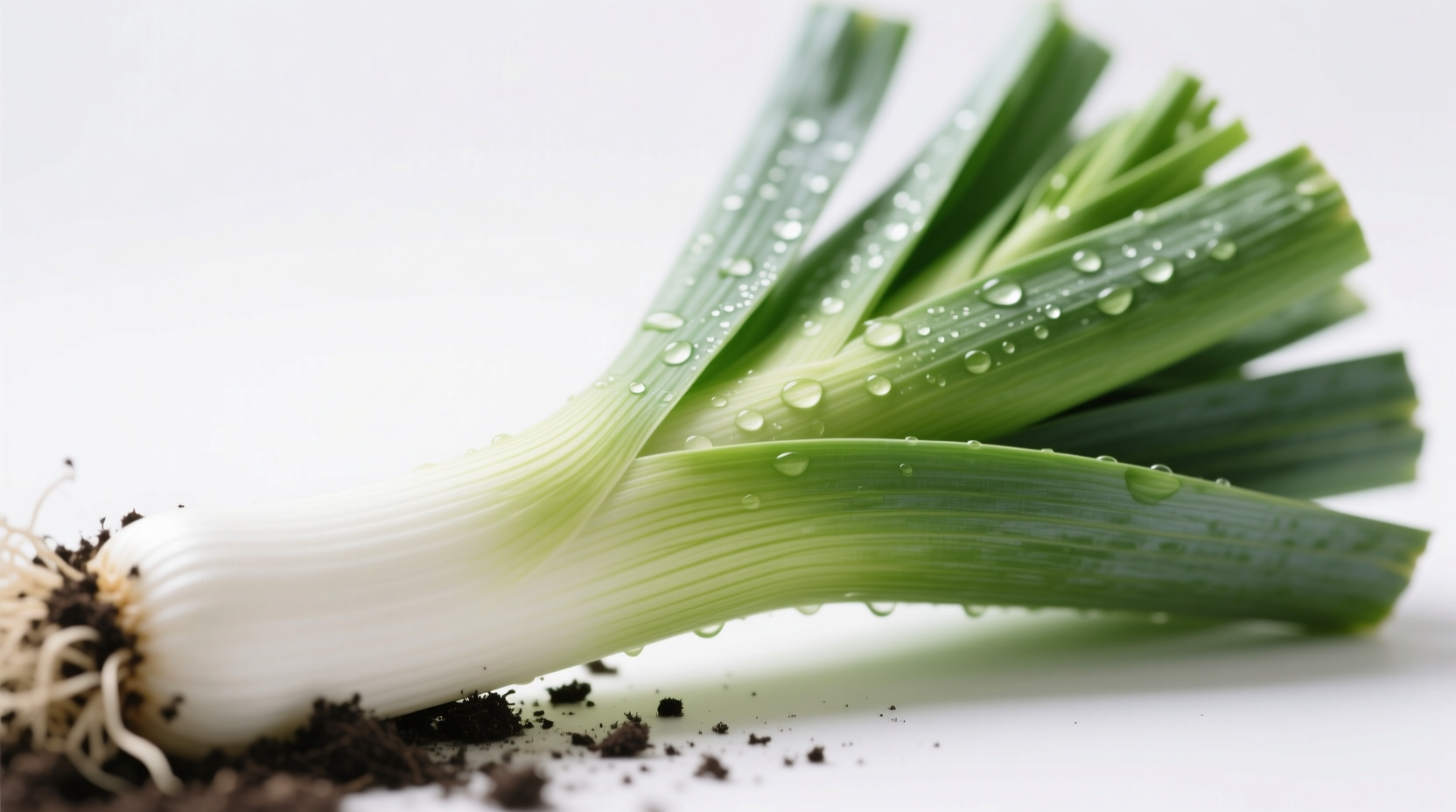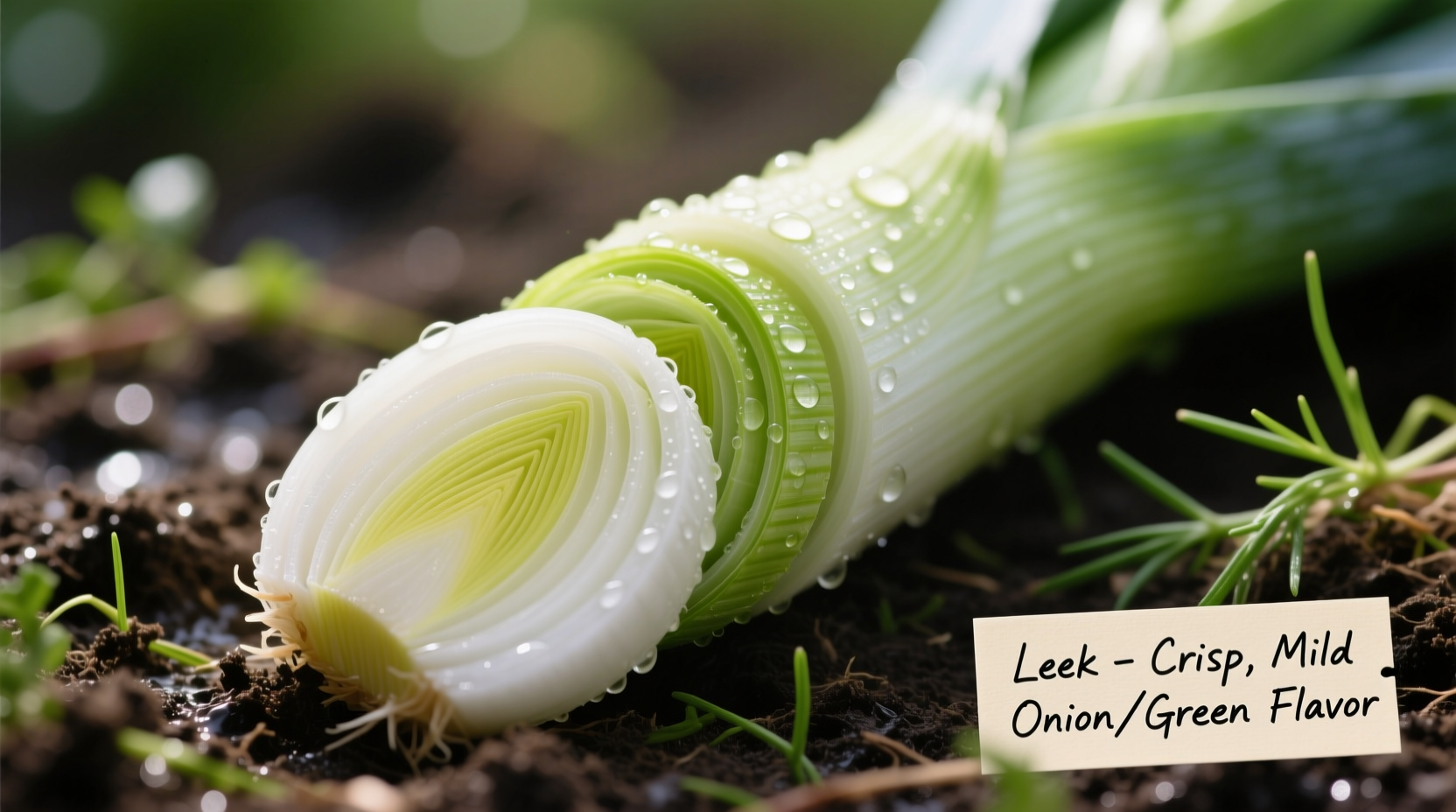If you've ever wondered what do leeks taste like compared to their allium cousins, you're not alone. Many home cooks hesitate to use leeks simply because they're unfamiliar with their unique flavor profile. Understanding leek taste characteristics is essential for making the most of this versatile vegetable in your kitchen.
Your Complete Guide to Leek Flavor Profile
Leeks (Allium ampeloprasum) belong to the same family as onions, garlic, and shallots, but they offer a distinctly different sensory experience. Unlike their more pungent relatives, leeks provide a refined flavor that enhances dishes without dominating them.
Raw Leek Taste Characteristics
When consumed raw (typically the white and light green parts), leeks deliver:
- A gentle, mildly sweet onion flavor with subtle grassy notes
- Noticeable but not overpowering sharpness (about one-third the intensity of yellow onions)
- Crisp, firm texture similar to celery but more tender
- Faint peppery undertones that dissipate with cooking
The what does a leek taste like when raw experience is often described as "onion's sophisticated cousin"—present but never aggressive. This makes raw leeks ideal for salads, fresh salsas, and as a garnish where you want onion flavor without the burn.
How Cooking Transforms Leek Flavor
The magic of leeks happens when heat is applied. As USDA agricultural research confirms, the sulfur compounds in leeks transform during cooking, creating complex new flavor molecules:
- Sautéing: Develops rich caramelization with buttery notes (5-7 minutes on medium heat)
- Roasting: Concentrates sweetness, creating almost nutty undertones (25-30 minutes at 400°F)
- Braising: Yields silky texture with deep, rounded flavor (20-25 minutes in liquid)
- Raw to cooked transformation: Pungency decreases by 60-70% while natural sugars become more pronounced
This how does cooking change leek flavor phenomenon explains why they're foundational in French cuisine—particularly in potage parmentier (leek soup)—where their mild nature allows other ingredients to shine.
| Allium Type | Flavor Intensity (1-10) | Sweetness Level | Best Culinary Uses |
|---|---|---|---|
| Leeks | 3-4 | High | Soups, quiches, roasted vegetable medleys |
| Yellow Onions | 8-9 | Medium | Sautéing, caramelizing, robust dishes |
| Shallots | 6-7 | Medium-High | Vinaigrettes, delicate sauces, roasts |
| Scallions | 5-6 | Low-Medium | Garnishes, stir-fries, quick cooking |
White vs. Green Parts: Flavor Differences You Should Know
Many cooks discard the green tops, not realizing they contain valuable flavor differences:
- White and light green portion: More concentrated onion flavor, ideal for dishes where you want noticeable allium presence
- Dark green tops: Milder, more vegetal/grassy taste—perfect for stocks, soups, and slow-cooked dishes
Professional chefs like those at The Culinary Institute of America recommend using the entire leek: reserve whites for finished dishes and greens for flavor bases. This approach maximizes both flavor complexity and reduces food waste.

Seasonal Flavor Variations
Leek flavor changes throughout the year according to research from University of Minnesota Extension:
- Spring leeks: Thinner, more delicate with higher moisture content—mild flavor perfect for raw applications
- Summer leeks: Slightly stronger flavor as they mature, ideal for grilling and roasting
- Winter leeks: Sweetest after frost exposure (similar to parsnips), with concentrated sugars from cold weather stress
Understanding these seasonal differences in leek taste helps you select the right leeks for your culinary purpose. Winter leeks particularly shine in heartier dishes where their natural sweetness balances rich ingredients.
Common Flavor Mistakes and How to Avoid Them
Many home cooks miss the mark with leeks due to these preventable errors:
- Not cleaning properly: Sand trapped between layers creates unpleasant grittiness—always slice lengthwise and soak in cold water
- Overcooking: Turns leeks bitter instead of sweet—aim for tender-crisp texture
- Using only whites: Wastes flavorful greens and creates imbalance—use appropriate parts for different cooking stages
- High-heat cooking: Causes burning before proper flavor development—use medium-low heat for best results
When prepared correctly, leeks deliver that perfect what do leeks taste like in soup experience—subtle enough not to dominate, yet substantial enough to provide essential flavor foundation.
Smart Substitutions When Leeks Aren't Available
If you're wondering what tastes similar to leeks, consider these substitutions with proper ratios:
- Shallots + green onions (2:1 ratio): Closest flavor match for most cooked applications
- Fennel bulb (for raw applications): Similar texture with mild anise notes
- Yellow onions (reduced quantity): Use ⅓ less onion than leeks called for, as they're more pungent
Remember that leek flavor compared to onion is significantly milder, so direct 1:1 substitutions often result in overly strong onion flavor. Adjust quantities accordingly to maintain recipe balance.
Maximizing Leek Flavor in Your Cooking
Professional chefs use these science-backed techniques to enhance leek flavor:
- Dry brine before cooking: Sprinkle with salt 15 minutes prior to draw out excess moisture for better caramelization
- Cook in two stages: Sauté whites first, add greens later to balance flavor intensity
- Add acid at the end: A splash of lemon juice or vinegar brightens the natural sweetness
- Pair with complementary flavors: Works exceptionally well with thyme, bay leaf, cream, and mild cheeses
These methods transform the question of what do cooked leeks taste like from simple curiosity to culinary advantage—helping you create dishes with nuanced, professional-quality flavor profiles.











 浙公网安备
33010002000092号
浙公网安备
33010002000092号 浙B2-20120091-4
浙B2-20120091-4